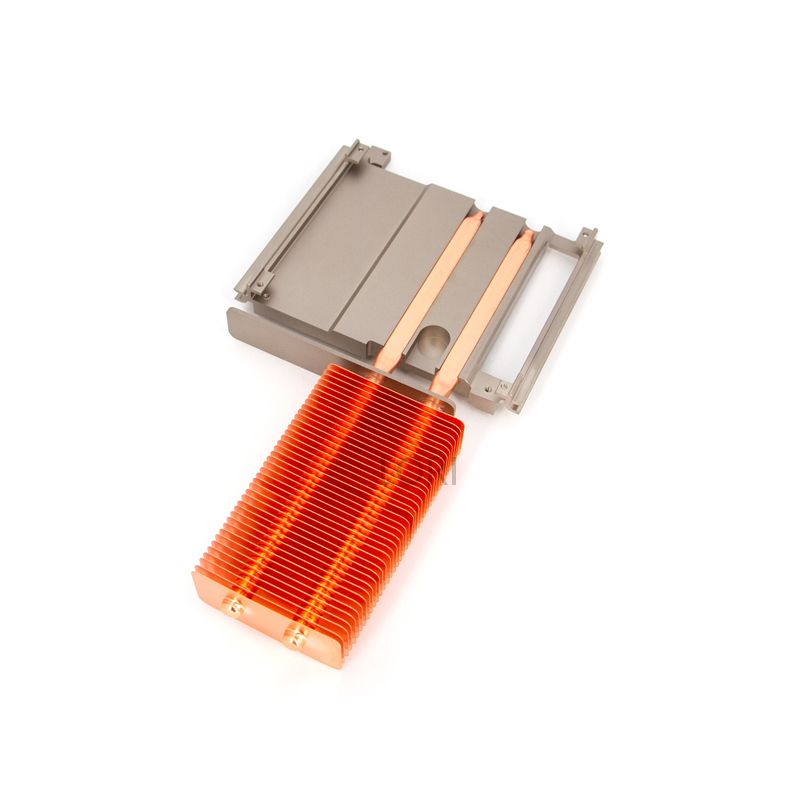In projector heat dissipation solutions, the use of heat sinks is a critical component. Heat sinks accelerate the dissipation of heat by increasing the surface area, helping to keep internal components of the projector within an appropriate operating temperature range. Below is a detailed analysis of the use of heat sinks in projectors:
1. The Role of Heat Sinks
- Heat Conduction: Heat sinks effectively transfer heat generated inside the projector from the heat source (such as bulbs, LED light sources, or chips) to a larger area, reducing local high temperatures.
- Increased Heat Dissipation Area: The design of heat sinks typically features a large surface area, which increases the area of heat exchange with the surrounding air, thereby improving heat dissipation efficiency.
- Reduced Thermal Resistance: High-quality heat sink materials (such as aluminum alloy, copper, etc.) have low thermal resistance, allowing heat to be transferred to the air more rapidly.
2. Types and Selection of Heat Sinks
- Material Selection: Heat sink materials should have high thermal conductivity, low density, high specific heat capacity, and good machinability. Commonly used materials include aluminum alloy, copper, and its alloys.
- Structural Design: The structural design of the heat sink should consider the direction and speed of airflow to ensure efficient heat dissipation. Common heat sink structures include fin-type and pin-type designs.
- Thickness and Size: The thickness and size of the heat sink should be determined based on the specific needs and spatial layout of the projector, balancing heat dissipation effectiveness with installation convenience.
3. Usage and Installation of Heat Sinks
- Installation Location: Heat sinks should be installed near the heat source inside the projector to directly absorb and dissipate heat. The installation location should also ensure smooth airflow, avoiding obstructions that could affect heat dissipation.
- Fixing Methods: Heat sinks are usually fixed inside the projector using screws, clips, or thermal adhesive. During installation, it is important to ensure close contact between the heat sink and the heat source to minimize thermal resistance.
- Thermal Interface Materials: A layer of thermal interface material (such as thermal silicone grease or thermal gel) can be applied between the heat sink and the heat source to further reduce thermal resistance and improve heat dissipation efficiency.
4. Maintenance and Care of Heat Sinks
- Regular Cleaning: Over time, dust and dirt may accumulate on the heat sink, affecting its heat dissipation effectiveness. Therefore, the heat sink should be cleaned regularly to ensure its surface is free from foreign objects.
- Check Fixing Condition: Periodically check the fixing condition of the heat sink to ensure there are no looseness or detachment. If necessary, promptly re-secure or replace the heat sink.
5. Innovations and Developments in Heat Sink Technology
With continuous technological advancements, heat sink technology is also evolving. For example, some high-end projectors use liquid cooling technology, which absorbs and dissipates heat through circulating coolant, significantly improving heat dissipation efficiency. Additionally, some projectors feature intelligent temperature control systems that automatically adjust fan speed and heat sink operation based on the projector's actual operating temperature, achieving more precise heat dissipation control.
Heat sinks play a crucial role in the heat dissipation solutions of projectors. Lori is a professional heat sink manufacturer, and we offer one-stop thermal solutions. If you need assistance, please contact us for customized heat sink services.






